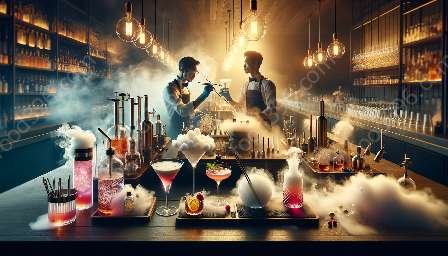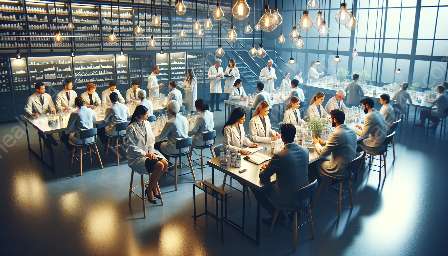Molecular gastronomy is a cutting-edge culinary discipline that explores the science behind cooking and food preparation. As the field has continued to evolve, it has branched out to include molecular mixology, which focuses on the science of creating innovative and exciting cocktails.
When delving into the realm of molecular gastronomy and mixology, it's essential to consider safety as you experiment with new techniques and ingredients. This topic cluster will provide a comprehensive understanding of the safety considerations in molecular gastronomy and how they relate to molecular mixology.
The Basics of Molecular Gastronomy
Molecular gastronomy is a branch of food science that investigates the physical and chemical transformations that occur during cooking. It involves experimenting with modern ingredients and cooking techniques to create innovative dishes that are visually stunning and full of surprising textures and flavors.
Key safety considerations in molecular gastronomy include handling liquid nitrogen, working with high temperatures, and using chemical substances such as emulsifiers and gelling agents. These ingredients and techniques require careful handling and knowledge to ensure the safety of both the chef and the consumers.
Key Safety Considerations in Molecular Gastronomy
Liquid Nitrogen Safety:
One of the most iconic elements of molecular gastronomy is the use of liquid nitrogen to rapidly freeze ingredients and create striking visual effects. However, liquid nitrogen can be extremely cold, with a boiling point of -196 degrees Celsius. Proper handling and storage of liquid nitrogen are essential to prevent frostbite or other injuries.
High-Temperature Cooking:
Modernist cooking techniques often involve applying high heat to food, such as using blowtorches for caramelization or cooking sous vide in precise temperature-controlled water baths. Chefs must be well-versed in the safe use of these tools and equipment to avoid burns and other hazards.
Chemical Safety:
Molecular gastronomy often involves using chemicals like emulsifiers, gelling agents, and thickeners to achieve unique textures and consistencies in food. Proper handling, storage, and accurate measurement of these substances are critical for both food safety and the safety of the individuals handling them.
Molecular Gastronomy and Molecular Mixology
Molecular gastronomy and molecular mixology share many common methods and ingredients, particularly when it comes to scientific principles such as emulsification, spherification, and foaming. However, molecular mixology introduces additional safety considerations specific to the world of cocktails and beverages.
When creating innovative cocktails using molecular mixology techniques, bartenders and mixologists must pay special attention to the safe use of alcohol, handling of carbonation, and the responsible use of speciality ingredients like bitters and tinctures.
Compatibility of Molecular Gastronomy and Molecular Mixology
With the shared foundation of scientific experimentation and creativity, molecular gastronomy and molecular mixology can complement each other in exciting ways. By exploring the shared safety considerations and innovative techniques, chefs and mixologists can create memorable dining experiences that delight all the senses.
As the fields of molecular gastronomy and molecular mixology continue to evolve, a dedication to safety and responsible experimentation is crucial. By understanding and prioritizing the necessary safety considerations, chefs, bartenders, and food enthusiasts can explore the limitless possibilities of these captivating disciplines while ensuring the well-being of both creators and consumers.


